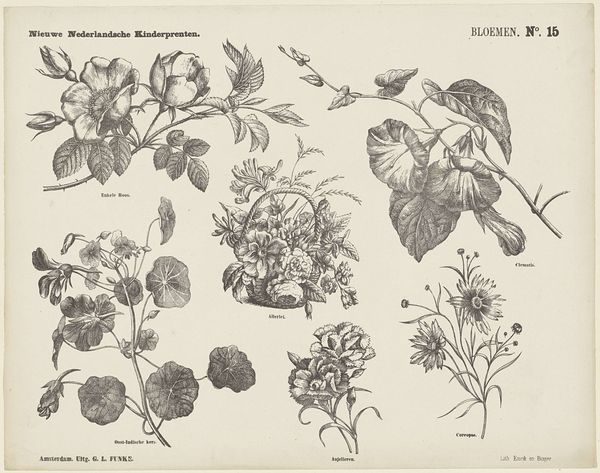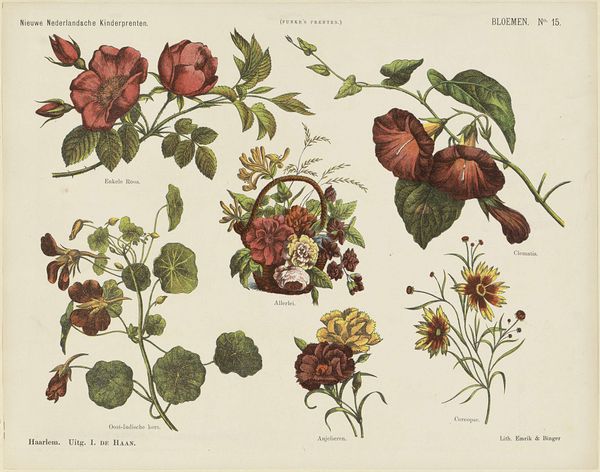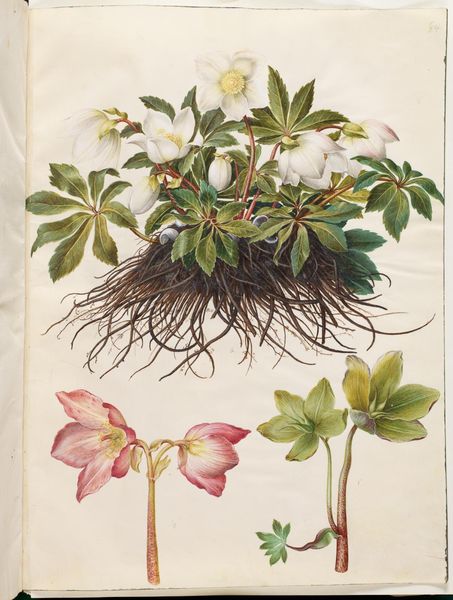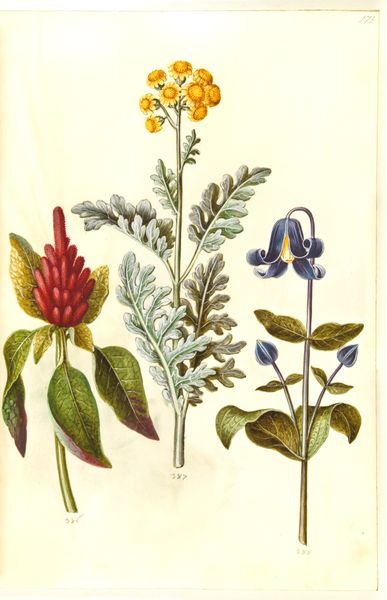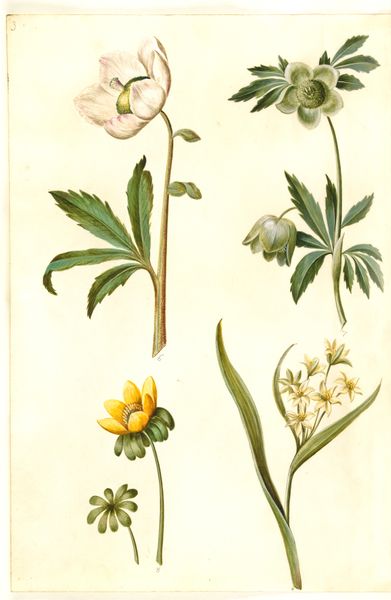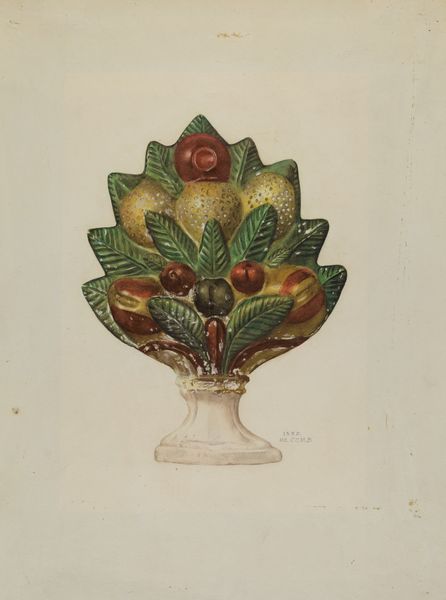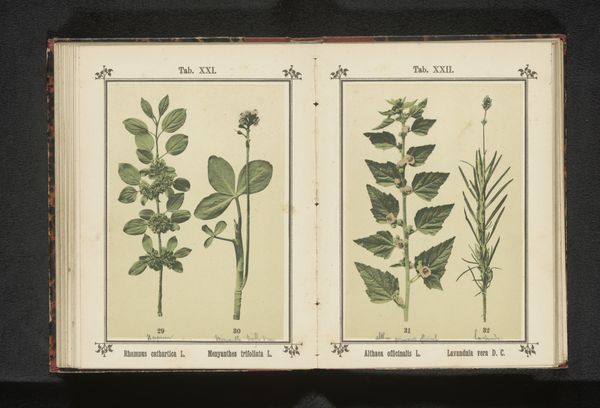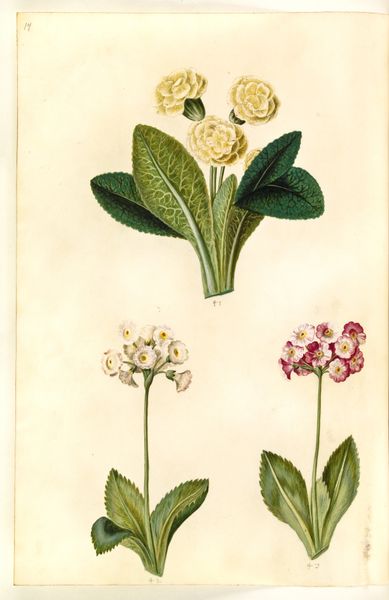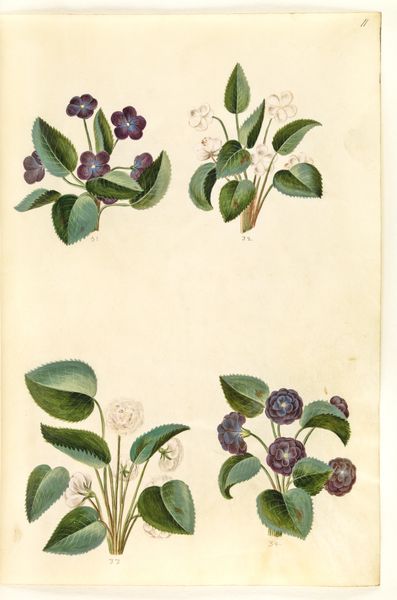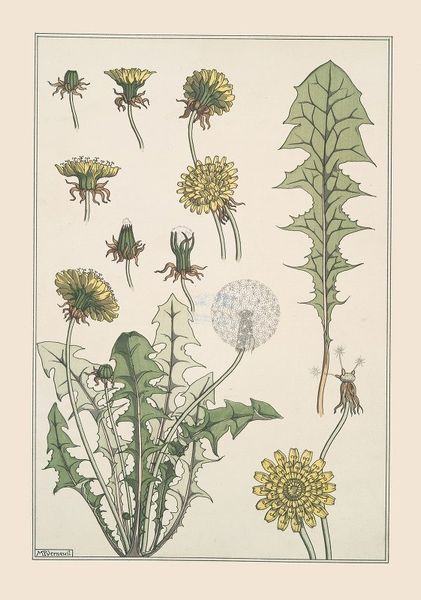
print, watercolor
#
art-nouveau
# print
#
watercolor
#
watercolour illustration
#
decorative-art
Dimensions: height 342 mm, width 430 mm
Copyright: Rijks Museum: Open Domain
Editor: This print, dating between 1875 and 1903, is called “Hoe men een bloemruiker maakt” – roughly, “How to make a bouquet.” It’s by Jan de Haan and appears to be a watercolor illustration printed on paper. What strikes me is how it seems like a template for arranging flowers, like a guide, almost educational. What do you see in it? Curator: It resonates with familiar visual grammar – specifically, the language of "disassembled" or exploded diagrams meant to illustrate instructions. The separated blooms and stems aren't simply botanical illustrations. The artist invokes the coded symbolism within flowers, a coded tradition of communicating affection or allegiances. We can view it through a modern lens of psychological or therapeutic activity. The image encourages active creation while tacitly transmitting floral meanings and associated emotions. Editor: So, it's more than just a picture; it’s interacting with the viewer in terms of creation, memory, emotion... But what does the template imply? Is there a right or wrong way to build the bouquet? Curator: It touches upon the tension between prescribed behaviour versus individual interpretation. Note the individual stems as well as the vase of greenery – symbols in themselves – a promise, or expectation, of fecundity. It's about engaging with our cultural understanding of how we assemble beauty. What meanings do we carry within ourselves, inherited meanings from childhood? The "correctness" isn’t simply aesthetic, but deeply intertwined with cultural expectations around social graces, taste, even courtship. Editor: I see, so it teaches about flowers and social customs, or some other underlying societal “order." Curator: Exactly. It’s a lesson, perhaps more lasting than a simple flower arrangement itself. It serves as cultural memory. Editor: Thanks, I hadn’t thought of it in those terms at all.
Comments
No comments
Be the first to comment and join the conversation on the ultimate creative platform.

